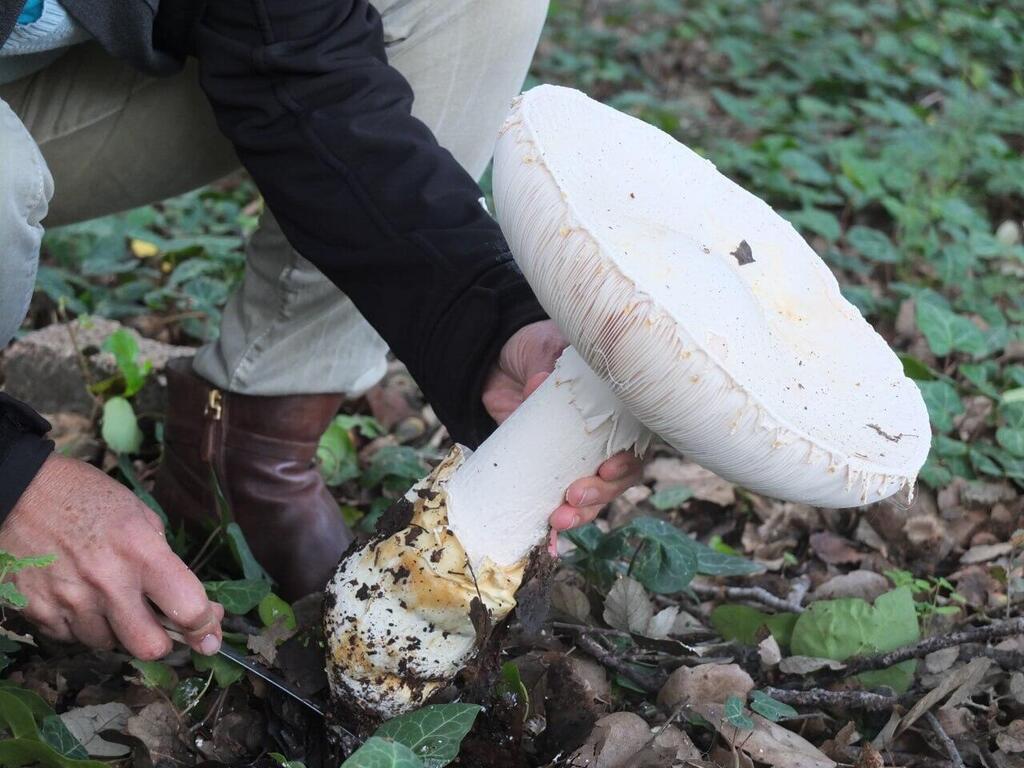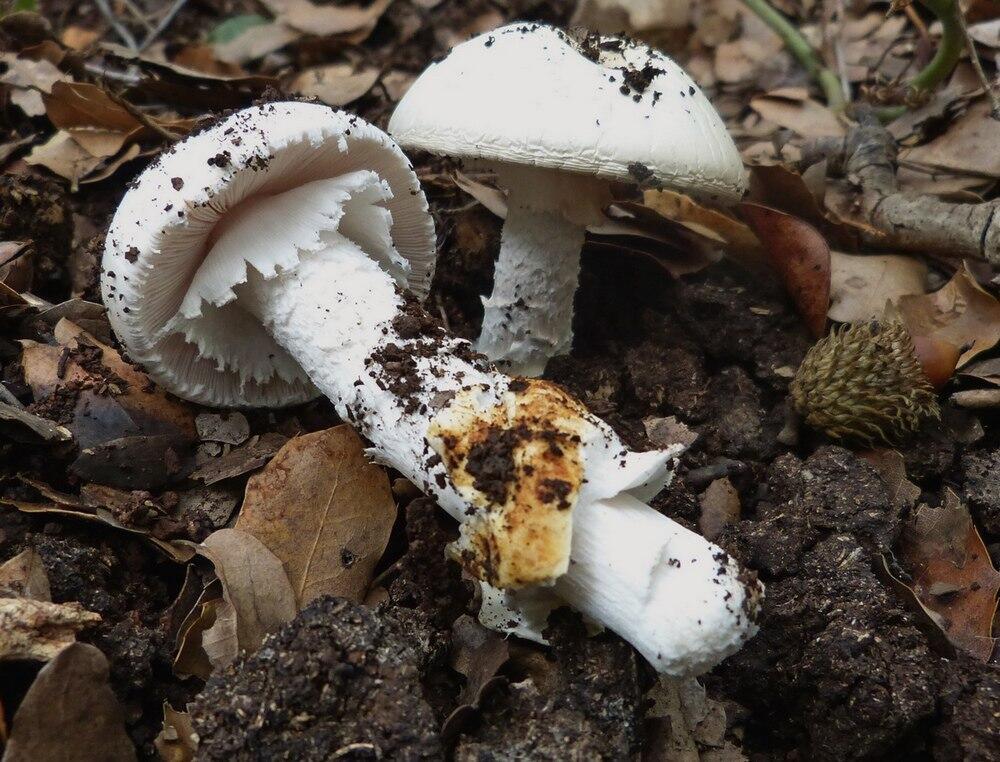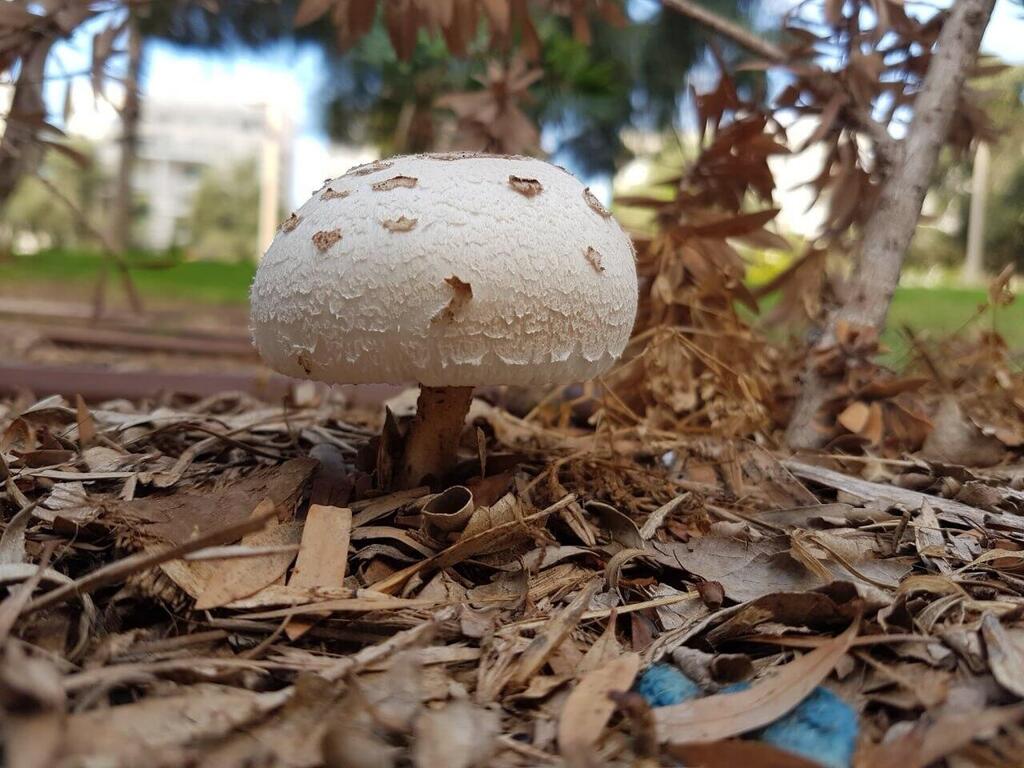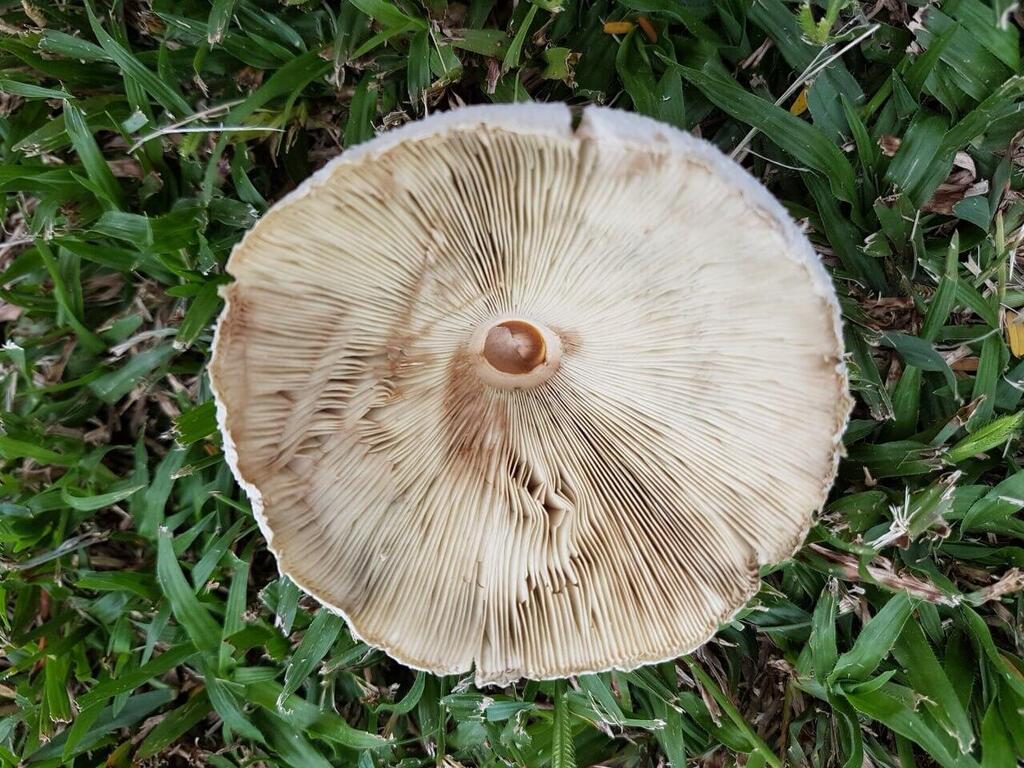(Video: ZAVIT)
If you grew up in the ‘80s or the ‘90s, you probably watched the Smurfs. These cheerful creatures, who have to face the plots of evil Gargamel, live inside white-dotted red mushrooms – which have become one of the distinct symbols of the well-known children's series.
Other stories:
What’s less known about this series (even by its most devout viewers) is that this red mushroom – which many children imagined as a rather charming home – is no other than the fly agaric (Amanita muscaria). It is a poisonous mushroom – which might cause dreadful symptoms, including severe hallucinations.
Though this specific red mushroom cannot be found in Israel, some of its relatives from the Amanitaceae family are some of the mushrooms responsible for the harshest poisoning cases in Israel.
A new study – presented at the first Israeli conference for wild mushrooms, published in Mycologia, and to be published soon in Hebrew in Forest (Ya’ar) – a journal of KKL-JNF – expands on the existing knowledge about poisoning in Israel.
The study reveals, among other findings, that about 40% of poisoning cases involve children up to 6. These figures are even more disturbing considering that since the outbreak of the coronavirus epidemic in 2020, there has been an increase in poisoning cases in Israel.
Israeli-mushroom relations
According to a survey by the Society for Wild Mushrooms in Israel, there are close to 750 known species of mushrooms in the country: 135 of them are suitable for eating, about 600 are in the range between edible under certain conditions to suspected as toxic or not enough is known about them, three species contain hallucinogens (psychoactive substances that may cause hallucinations) and three species – the fool's mushroom (Amanita verna) with its fleshy "hat", the death cap (Amanita phalloides) that has a spherical top, and the deadly dapperling (Lepiota brunneoincarnata) with its brown “hat” – all contain toxins (of the cyclopeptide group) that inhibit mechanisms of protein production in the human body, hurt the liver (mainly), and might cause death if consumed.
4 View gallery


Amanita ovoidea - can be eaten, but is so similar to the poisonous Amanita proxima that even experts get them mixed up
(Photo: Tamar Lewinsohn)
The new study – conducted by Dr. Dalia Lewinsohn, a mycologist (that is, mushroom researcher) from the Shamir Research Institute alongside her student, Aviad Gaon, Dr. Alona Biketova from Kew Gardens in England, in collaboration with Prof. Yedidia (Didi) Bentur and Dr. Yael Lurie from the Israel Poison Information Center in the Rambam Health Care Campus, and which was presented at the first conference on wild mushrooms in Israel, organized in collaboration of the Mycological Society of Israel, the Israel Society of Ecology and Environmental Sciences, KKL-JNF, the Shamir Institute, the MIGAL Galilee Research Institute, the Robert H. Smith Faculty of Agriculture, Food and Environment and the Tel Hai College – examined the phenomenon of wild mushroom poisoning in Israel.
The study shows that 2020 was a turning point in the mushrooms-Israelis relations: with the outbreak of the Coronavirus pandemic, more urban residents went out to nature next to their homes, and the interest in collecting wild mushrooms grew larger and larger. Along with interest, however, came also poisonings.
According to Lewinsohn, various posts on social media – both guides for picking mushrooms and notes written by individual mushroom enthusiasts – also affect the trend in question. “Looking for mushrooms is somewhat similar to hunting, in that it arouses our excitement, as well as our curiosity and sense of adventure,” she explains.
According to Lewinsohn, the mushrooms themselves also had a part in the trend because they had optimal conditions: in 2020, precipitation reached Israel when the weather was still hot and humid – which had the combined effect of increased quantities of mushrooms.
Toxic or not toxic, that is the question
The new study found that between 2010–2020 there were 614 cases of wild mushroom poisoning in Israel. Compared to other countries, ours had it relatively good: while only 0.17% of all inquiries about poisoning in Israel were due to eating poisonous mushrooms, in Switzerland, for example, the rate was 1.7%.
Of these 614 cases, 41% involved adults (over the age of 18), 39% had to do with children up to 6, and 15% were 6-18 years old. Additionally, more cases involved men rather than women. Lewinsohn explains that children tend to be curious about their environment and taste various things that come their way on the ground; naturally, some of those things are mushrooms.
As mentioned, the fool’s mushroom, the death cap, and the deadly dapperling were responsible for the most severe poisonings. The most common mushrooms in poisoning cases in Israel are of the Inocybe genus and the Green-spored Parasol (Chlorophyllum molybdites).
The former have poison which can cause, among other conditions, increased secretion of saliva and sweat, constriction of the pupils, and a drop in blood pressure; the latter causes severe digestive system disruptions.
While most poisonings occur in the winter – when most mushrooms emerge above ground – the Green-spored Parasol grows in the summer, in grasses, and is responsible for most of the poisoning cases in the warm months.
And if you too are used to the fact that the “correct” setting for picking mushrooms that turn out to be deadly is a forest, you might be surprised to learn that, in fact, lawns – both public and domestic – were the most common places for poisoning cases to occur in.
A fantastic mushroom
All of the above considered, how can you continue picking mushrooms but still protect yourself from poisoning? “In telling edible mushrooms apart from poisonous ones, you can’t rely on smell or taste, nor can you rely on cooking to neutralize the toxins – because they contain substances that are heat resistant,” explains Lewinsohn.
Therefore, she recommends not collecting mushrooms without either a qualified guide or prior in-depth knowledge. “Publishing the poisoning cases and raising awareness among the public about the dangers of picking mushrooms could help reduce the number of poisoning cases. In addition, it is important to keep children away from mushrooms growing on lawns.”
However, even though incorrectly using mushrooms might cause illness or even death – mushrooms are essential for all of us: they are responsible for the breaking down and recycling of organic matter, they contribute to the growth of trees and plants, and they are used to produce various types of medicine, such as penicillin.
Due to all these, we should protect them better from human harm. “Climate changes such as dry years and accelerated urbanization processes that cause a reduction in the size of natural areas – decrease the spread of the mushrooms,” explains Lewinsohn.
In addition, Israel is a semi-desert country, so the number of mushrooms here is small compared to other regions. It follows that the importance of nature reserves in protecting the spread of mushrooms is crucial.
“Without nature reserves in Israel – where picking and gathering of mushrooms is prohibited – their numbers would probably be far smaller,” says Lewinsohn. “That’s why we need to raise the public awareness of nature conservation and to guide them towards less mushroom gathering – so that the mushrooms can continue to grow here in the years to come.
Content distributed by ZAVIT - The News Agency of the Israeli Society of Ecology and Environmental Sciences






